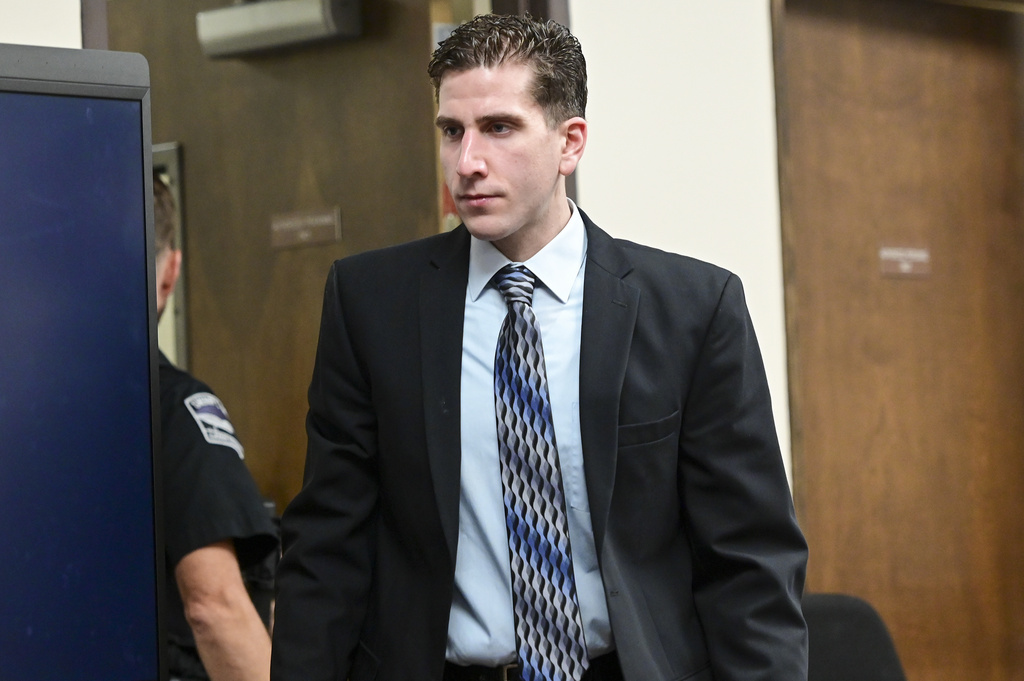Bryan Kohberger’s defense rejected the prosecution’s call for a protective order barring the release of some of its DNA work toward identifying a suspect in the murders of four University of Idaho students last fall, accusing the state of “hiding its entire case” behind the protective order it seeks.
The defense motion suggests there may be multiple other possible suspects that investigators ignored, including “two additional males’ DNA within the house where the deceased were located,” once they identified Kohberger as their suspect.
The defense says it’s important for them to understand exactly how the prosecution came to decide that Kohberger was their man, including how they came to believe a car seen in surveillance footage in the area was a white Elantra — the type car driven by Kohberger.
Kohberger is accused of stabbing to death Ethan Chapin, Madison Mogen, Xana Kernodle, and Kaylee Goncalves in the early hours of November 13. He was arrested at his parents’ home in Pennsylvania on December 30 and indicted last month in Idaho.
His attorneys and prosecutors have been sparring since in back-and-forth court filings over what information is “discoverable” — that is, exactly what parts of the investigation must be handed over to the defense so they can prepare their case.

Prosecutor Bill Thompson filed a request on June 16 for a protective order covering the investigative genetic genealogy work done by the FBI prior to Kohberger’s arrest, as CrimeOnline has reported. That work, Thompson said, generated “hundreds of innocent relatives of the family tree” that helped narrow down the suspect list, but it was more specific work from the Idaho State Police lab that clarified the suspect for investigators.
All the DNA work started from a sample found on a knife sheath left by the body of one of the victims. The state police initially found no match for the DNA in criminal databases, but the FBI drilled down to a family tree before they matched the sheath sample with a sample taken from the Kohbergers’ trash, which they said was from the suspect’s “biological father.”
Kohberger’s DNA was sampled by search warrant after his arrest, and the state lab “showed a statistical match” with the DNA found on the knife sheath.
The defense motion, however, says that without the ability to see all of the work done with the DNA sample, they can’t even be sure that the DNA from the knife sheath was not put there by “someone else during an investigation that spans hundreds of members of law enforcement and apparently at least one lab the State refuses to name.”
062323 Objection to States Motion for Protective Order by kc wildmoon on Scribd
“Mr. Kohberger has reasons to be extremely suspicious of the IGG used in this case,” the motion says.
“Rather than seeing it as some sort of complex tree building that led to him, it appears for more like a lineup where the government was already aware of who they wanted to target. Rather than have the investigation done by someone blind to that fact, the FBI chose to do it themselves. This is akin to the police pulling in Mr. Kohberger and five of his cousins off the street and then pointing to him.”

“No matter what came first, the car or the genetic genealogy, the investigation has provided precious little,” attorneys wrote. “There is no connection between Mr. Kohberger and the victims. There is no explanation for the total lack of DNA evidence from the victims in Mr. Kohberger’s apartment, office, home, or vehicle.”
“In essence, through the lack of disclosure and their motion to protect the genetic genealogy investigation, the State is hiding its entire case.”
The defense has filed a motion to delay the trial, currently set to begin on October 2.
For the latest true crime and justice news, subscribe to the ‘Crime Stories with Nancy Grace’ podcast.
[Featured image: FILE: Bryan Kohberger enters the courtroom for a motion hearing on June 9, 2023. (Zach Wilkinson/Moscow-Pullman Daily News via AP, Pool)]



